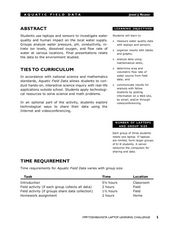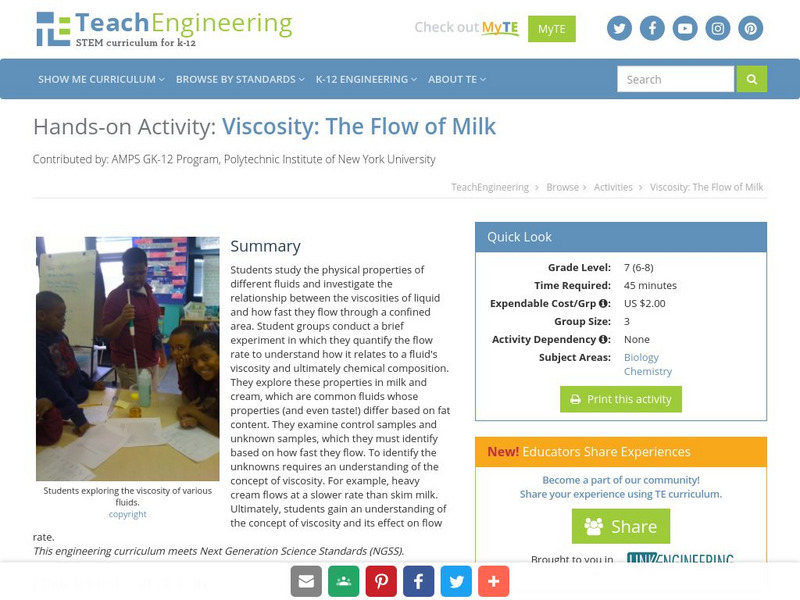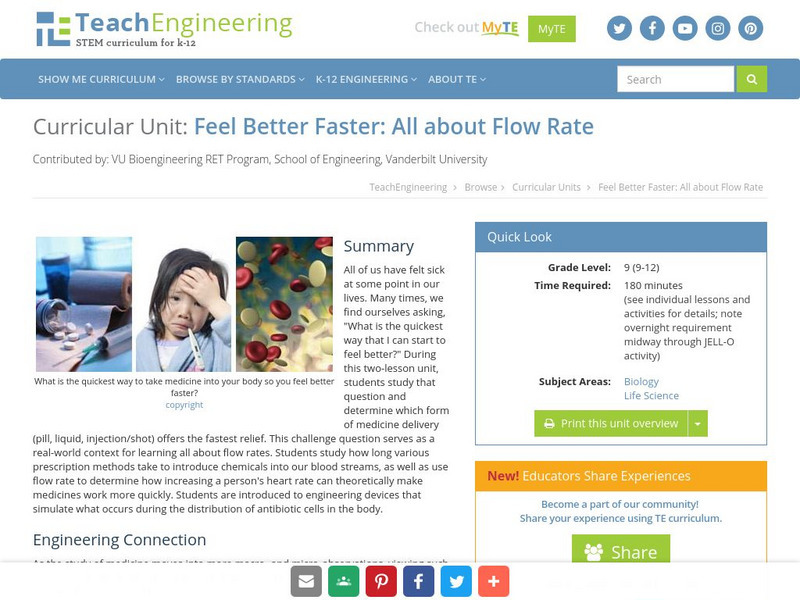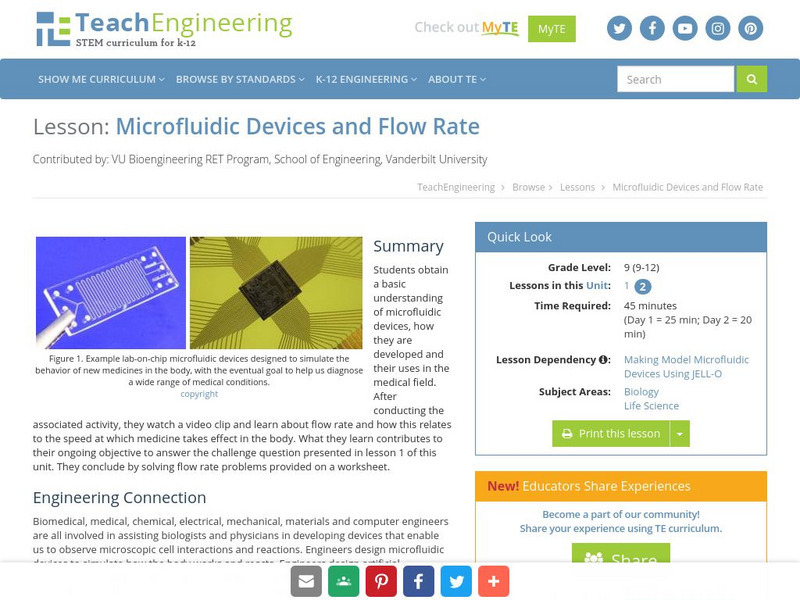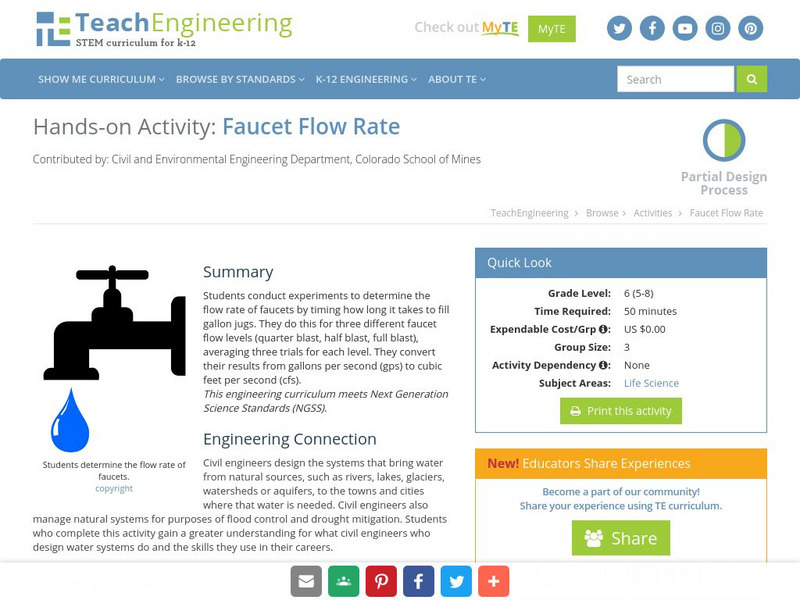Curated OER
Aquatic Field Data
Students use laptops and sensors to measure water quality and graph their results. In this aquatics instructional activity students post their results to a website or email.
TeachEngineering
Teach Engineering: How Much Water Do You Use?
Students keep track of their own water usage for one week, gaining an understanding of how much water is used for various everyday activities. They relate their own water usages to the average residents of imaginary Thirsty County, and...
TeachEngineering
Teach Engineering: Viscosity: The Flow of Milk
Students study the physical properties of different fluids and investigate the relationship between the viscosities of liquid and how fast they flow through a confined area. Student groups conduct a brief experiment in which they...
TeachEngineering
Teach Engineering: Feel Better Faster: All About Flow Rate
All of us have felt sick at some point in our lives. Many times, we find ourselves asking, "What is the quickest way that I can start to feel better?" During this two-lesson unit, students study that question and determine which form of...
TeachEngineering
Teach Engineering: Microfluidic Devices and Flow Rate
Students obtain a basic understanding of microfluidic devices, how they are developed and their uses in the medical field. After conducting the associated activity, they watch a video clip and learn about flow rate and how this relates...
American Geosciences Institute
American Geosciences Institute: Earth Science Week: Particle Size and Oil Production
In this investigation, students explore the permeabilities of different materials as it relates to oil production.
TeachEngineering
Teach Engineering: Flow Rates of Faucets and Rivers
In the Flow Rate Experiment, students perform hands-on experiments with a common faucet, as well as work with the Engineering Our Water Living Lab (accessible through TeachEngineering.com) to gain a better understanding of flow rate and...
TeachEngineering
Teach Engineering: Faucet Flow Rate
This activity allows students to determine the flow rate of a faucet in gallons per second (gaps) as well as cubic feet per second (cuffs) at three different levels (quarter blast, half blast, and full blast). By recording how long it...
TeachEngineering
Teach Engineering: River Flow Rate
In this activity, students utilize their understanding and feel for flow rate from the Faucet Flow Rate activity to estimate the flow rate in a local river. The objective is for students to relate laboratory experiment results to the...
Other
Ask Numbers: Measurement Conversion Calculators and Charts
What kind of unit conversion would you like to do? This site will allow you to do a multitude of conversions. Just click on the specific measurement you are needing to convert. It also provides a history of measurements and a chart of...


